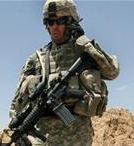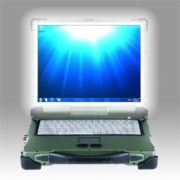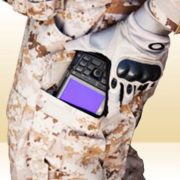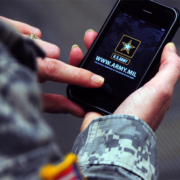 Maritime conditions are especially difficult for communications, and nowhere are they more important. Corrosive salt air, rough storms, and “dead areas” in the belly of a ship all conspire to damage critical equipment and sabotage the transmission of life-saving information. In the August issue of U.S. Coast Guard Forum, Roger that! reviews a variety of solutions for extending connectivity to all personnel, whether they are in the air, sea, or onboard a vessel. On page 26 of the article, AMREL’s Vice President of Strategic Business Development, Richard Lane, is interviewed about the adaption of innovative technologies for the needs of Coast Guard communications. Check it out!
Maritime conditions are especially difficult for communications, and nowhere are they more important. Corrosive salt air, rough storms, and “dead areas” in the belly of a ship all conspire to damage critical equipment and sabotage the transmission of life-saving information. In the August issue of U.S. Coast Guard Forum, Roger that! reviews a variety of solutions for extending connectivity to all personnel, whether they are in the air, sea, or onboard a vessel. On page 26 of the article, AMREL’s Vice President of Strategic Business Development, Richard Lane, is interviewed about the adaption of innovative technologies for the needs of Coast Guard communications. Check it out!
Some of the big attractions at last month’s AUVSI North American conference were micro-UAVs. The Samurai UAV was especially impressive, sporting an unusual asymmetric design. You may have seen images of this amazing little device, but do yourself a favor and check out the video below of Engineering TV’s interview with Bill Borgia, Director of the Intelligent Robotics Laboratory at Lockheed Martin. Read more
 The Department of Defense is determined to field mobile devices that connect soldiers to networks for the rapid transmission of data. A number of forces have inspired this initiative:
The Department of Defense is determined to field mobile devices that connect soldiers to networks for the rapid transmission of data. A number of forces have inspired this initiative:
- Younger soldiers, by their own volition, are using their own smartphones and tablets whenever possible.
- The doctrine of network-centric warfare has upended the traditional paradigm of sending ISR to the rear echelons and is instead emphasizing delivering real-time info to the front lines.
- Enemy forces have successfully used cell phones to relay information in their own networks. Read more

The Association for Unmanned Vehicle Systems International recently held its annual North America show, and AMREL was
Robotics System Joint Project Office (RSJPO) there! In addition to our booth showing off AMREL’s new interoperable payload controller, AMREL’s OCU solutions were displayed by a multitude of vendors, including: Read more
 One of the hottest topics in the unmanned systems community is civilian applications. As Smithsonian.com reports in Drones Ready for Takeoff:
One of the hottest topics in the unmanned systems community is civilian applications. As Smithsonian.com reports in Drones Ready for Takeoff:
“The potential seems limitless—handling routine monitoring of pipelines and power lines, for instance, or gathering geomagnetic data about natural resources (a job that entails flying hundreds of miles in a straight line, at low altitude, then moving 50 yards over and flying straight back). Drones could help farmers monitor crops in distant fields, allow real estate developers to perform simple construction jobs in remote or difficult locations or enable environmentalists to spot polluters.”
 Let’s assume that you already maxed out the brightness controls. Did you check the power management? If you’re running the laptop on batteries, it will often default to power savings mode, which will dim the screen. Also, crank up the contrast ratio to 5 to 1 or even higher. Does your computer think it’s dark out? Verify the dimming range is adjusted for the daytime, not the night. Adjust the viewing angle of the display screen. It sounds trivial, but the angle can make a big difference in how the screen is viewed.
Let’s assume that you already maxed out the brightness controls. Did you check the power management? If you’re running the laptop on batteries, it will often default to power savings mode, which will dim the screen. Also, crank up the contrast ratio to 5 to 1 or even higher. Does your computer think it’s dark out? Verify the dimming range is adjusted for the daytime, not the night. Adjust the viewing angle of the display screen. It sounds trivial, but the angle can make a big difference in how the screen is viewed.
Watch Ted Ventresca of www.fedmil.com interview Ron McMahan, VP Engineering Solutions at AMREL, about the ROCKY DB6, the world’s smallest rugged handheld that runs Windows 7/Linux.
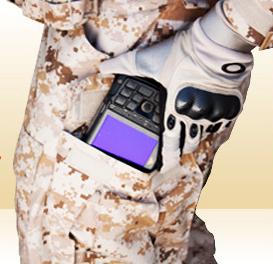 This short whitepaper discusses the problems facing front-line computing, including: data explosion, form factor, power, ruggedness, reliability, and interoperability. We review several approaches to overcoming these challenges, the potential of smartphones, and look at some of the Atom-based rugged computers currently on the market. To download this free whitepaper, click here.
This short whitepaper discusses the problems facing front-line computing, including: data explosion, form factor, power, ruggedness, reliability, and interoperability. We review several approaches to overcoming these challenges, the potential of smartphones, and look at some of the Atom-based rugged computers currently on the market. To download this free whitepaper, click here.
 See AMREL’s new interoperable Payload Controller Paylaod Controller, handheld OCU, as well as the the Rocky DB6, the world’s smallest rugged computer with full Windows 7/Linux. Stop by AMREL’s booth #3030, and get a good look at our line of fully rugged computers as wll as our suite of interoperable solutions.
See AMREL’s new interoperable Payload Controller Paylaod Controller, handheld OCU, as well as the the Rocky DB6, the world’s smallest rugged computer with full Windows 7/Linux. Stop by AMREL’s booth #3030, and get a good look at our line of fully rugged computers as wll as our suite of interoperable solutions.
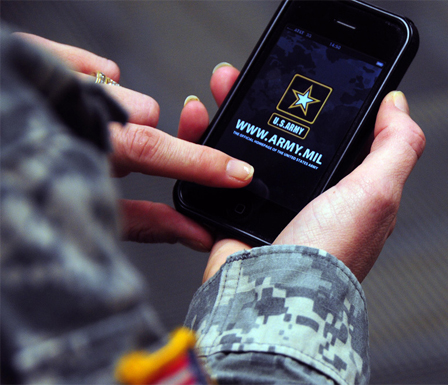 What is the optimal screen size for a mobile device used by a warfighter? Is it the 7″ to 12″ display of the tablet? The 3″ to 5″ of the smartphone? Something in-between?
What is the optimal screen size for a mobile device used by a warfighter? Is it the 7″ to 12″ display of the tablet? The 3″ to 5″ of the smartphone? Something in-between?
With the exception of security issues, the folks at the Pentagon and other real-echelon postings do not work in situations that much different than their civilian counterparts. For its stateside personnel, the Army can probably fulfill its ambitious smartphone program with whatever Commercial Off the Shelf (COTS) products it chooses.
However, warfighters operate in much more demanding environment. Small differences can have huge consequences. Read more
American Reliance, Inc.
789 N Fair Oaks Ave,
Pasadena, CA 91103
Office Hours
Monday-Friday:
8:00 am – 5:00 pm PST
Saturday: Closed
Sunday: Closed
Main: +1 (626) 482-1862
Fax: +1 (626) 226-5716
Email: AskUs@amrel.com
Blog Posts
Mobile Biometric Solutions
Mobile Biometric Smartphones & Tablets
BioFlex S® Commercial Smartphones
BioSense AT80B | 8″ Android Biometric Tablet
BioSense PA5 | 10.1″ (Gen 2) Android Biometric Tablet
BioSense PA5 | 10.1″ Android Biometric Tablet
BIOPTIX PM3B | 7″ Windows Biometric Tablet
BIOPTIX PM5B | 10.1″ Windows Biometric Atom Tablet


